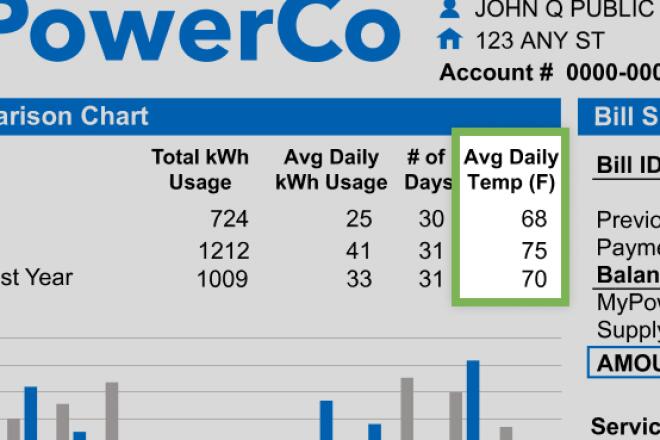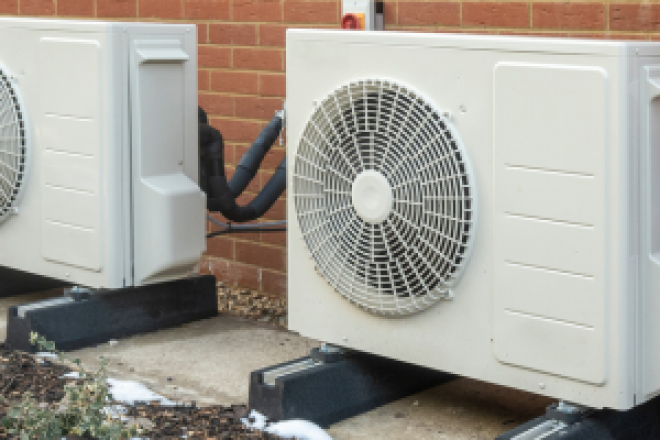Five Energy-Saving Tips for Earth Day
First celebrated on college campuses across the United States in 1970, Earth Day has become a global celebration in support of environmental protection.
In fact, according to Earth Day Network, the nonprofit organization that grew out of the first Earth Day celebration, Earth Day is now the largest global secular observance, with over one billion participants each year.
While there are many great ways you can get involved on behalf of the environment on Earth Day, including planting a tree, picking up trash at a local park or committing to not driving for the day, some of the most beneficial ways you can help relate to your home’s energy use.
According to EnergySage, homes were responsible for nearly 20 percent of national greenhouse gas emissions in 2016, but by engaging in a few easy energy-efficient actions, you can make a considerable dent in your home’s energy usage. On a larger scale, energy efficiency can also deter the construction of new power plants and reduce the pollution in your community.
If you’re interested in becoming more energy efficient starting with Earth Day 2019, here are five tips to get you started:
1) Replace your old light bulbs with LEDs
One of the most proven ways to make a major impact on lowering your home’s energy usage is upgrading your lighting to the latest LED technology. Not surprisingly, lighting is a main source of electricity usage in the home – at roughly 12-15 percent on average. But modern LED bulbs use at least 75 percent less electricity than incandescent bulbs, according to the U.S. Department of Energy. Plus, they can last 25 times longer, so it could be well over five years before you have to think about replacing them again.
In addition, the cost of these bulbs has gone down considerably in the past few years – while the quality of light and the variety of options have both improved. With costs at the current level, your new LED bulbs will pay for themselves in no time, especially with the rebates that are available now through most electricity providers, who are strongly encouraging consumers to make the switch. If you make one energy-related commitment for Earth Day this year, swapping out your old lightbulbs with LEDs is a good choice.
 2) Use smart power strips to limit “standby” electricity
2) Use smart power strips to limit “standby” electricity
Even when you’re not using many of your household electronics, these devices can still draw quite a bit of electricity on standby mode or even when they appear to be “turned off”. Some of the worst offenders are TVs, cable boxes and gaming consoles, but the many electronics in your home can all add up to quite a bit of wasted energy. In fact, the Lawrence Berkley National Laboratory states that standby power in an average home ranges from five to 10 percent of total household energy consumption.
Smart power strips and smart outlets allow you to get hold on “standby” energy (also called “phantom load” or “vampire energy”) by enabling the complete shut-off of energy to the appliances plugged into it. In addition, the “smart” aspect of these devices means you can shut off power remotely via a smartphone or voice assistant and that you can set timers for the power to shut off at a specific time. Finally, smart power strips and smart outlets are actually quite affordable (think $25-50), so you’ll get a return on your investment in no time.
3) Service your air conditioner for optimal performance
If you have an older air-conditioning unit and haven’t had it looked at in a few years, it’s likely time to do so. Since cooling accounts for a considerable percentage of the average home’s energy consumption, improving the performance of your air conditioner can have a major impact on your energy usage and monthly power bills. Fortunately, there are some easy steps you can take.
According to the Department of Energy, the most important routine maintenance is keeping your filters clean and unclogged, and replacing a dirty filter can lower your air conditioner's energy consumption by up to 15 percent. In the event that more complex maintenance is needed, it’s always a good idea to hire a professional technician, and if your air conditioner needs to be replaced entirely, consider buying a high-efficiency, ENERGY STAR-labelled air conditioner for the most cost-effective performance.
4) Weatherize your home or get a home energy audit
Not all solutions require a new technology. One of the most proven ways to improve your home's energy efficiency is weatherization, which is essentially sealing the air leaks around vents, windows, doors and other areas. For some areas, like around the window frame, this can mean using caulk; other areas, like around doors, require weather-stripping. Both of these, fortunately, are fairly inexpensive and available at any hardware store, and although simple, weatherization can actually save up to 20 percent of your home's energy use.
If you want to know more about leaks around your home, it may be time to call the professionals in. A professional energy auditor will conduct a room-by-room examination of your home and may even review your past power bills for unusual variations. Using techniques like a thermographic scan and the blower door test, the energy auditor will also detect sources of energy loss and then suggest ways to improve your home's energy efficiency. If you’re experiencing larger-than-normal power bills, connect with your electricity provider to see if they would recommend an audit.
5) Upgrade to a smart (or programmable) thermostat
We've already covered that cooling accounts for a large part of household energy usage, but on the other hand, heating typically accounts for a similar or even greater percentage. Fortunately, a smart thermostat can help you get a handle on both. Smart thermostats can save you about 12 percent on heating and 15 percent on cooling, which, based on average energy usage and home size, would be roughly $140 in savings per year on energy bills.
Smart thermostats learn your habits and preferred temperatures and adjust your home's temperature automatically in the most efficient manner possible. Using an app, you can also control your home's temperature remotely. Programmable thermostats offer some of the benefits of smart thermostats but require a bit more work on your part. Instead of having the learning aspect, you'll need program the changes in temperature on your own, but since they're typically cheaper than smart thermostats, some prefer to go this route. Either way, if you have an older thermostat at home, upping your thermostat game can be one of the best ways to start reducing your home’s energy use.
Conclusion
While these tips are sure to start you on the path to saving energy at home, they are far from the only ways. If you want to make a commitment to being more energy efficient this Earth Day, you may want to connect with your electricity provider on additional ways to do so.
Electricity providers are typically very supportive of energy efficiency (for a number of reasons) and, in addition to a wide range of energy efficiency tips, may offer rebates and other financial incentives to encourage their customers to adopt energy-efficient behaviors and technologies.
To learn more about the many changes coming to the world of energy and how you might benefit, check out our Evolving World of Energy series on how we get, how we use and how we pay for energy.



